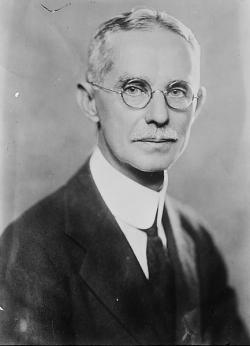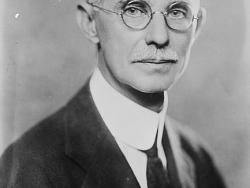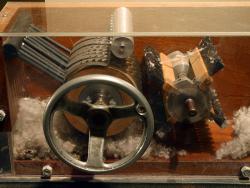This Creative Development Which Was Responsible For The Survival Of The Cotton Industry In The United States Occurred In General Nathaniel Greene's Plantation Near Savannah 10 Miles Northeast Of This Marker. Separation By Hand Labor Of The Lint From The Seed Of The Desired Upland Variety Of Cotton Produced Only One Pound Per Day Per Person. Eli Whitney, A Native Of Massachusetts And Yale Law Graduate, Came To Georgia To Teach School In Late 1792, At Age 27. Mrs. Catherine Greene, Widow Of General Greene, Invited Whitney To Her Plantation, And Urged Him To Design A Cotton Gin.
GA


When Georgia chemist Charles Holmes Herty found a way to make quality paper from pine trees in 1932, he also founded an industry that brought much-needed jobs to the depression-crippled south. Paper producers had deemed the plentiful pine too gummy—until Herty's Savannah Pulp and Paper Laboratory wrote a new chapter in the ancient craft inspired by insects who built paper nests while dinosaurs roamed the earth. At its root, however, the papermaking process remained the same: the bonding of cellulose, a polymer whose long chains support plant cell walls.

The Savannah city plan, whose execution began in 1733, is distinguished from those of previous colonial towns by the repeated pattern of connected neighborhoods, multiple squares, streets, and designed expansion into lands held by the city. It is unique in the history of urban planning in a number of aspects, not the least of which is that the squares allow for more open space in Savannah than any city layout in history.


On Right: Tech Tower
Photo circa 1899Era_date_from: 1888
Delta Air Lines’ historic buildings consist of two aircraft hangers and several office buildings at the Delta World Headquarters site constructed between 1941 and 1947. On March 1, 1941, Delta Air Lines moved its corporate headquarters to Atlanta, constructing offices space and Hangar 1, the largest aircraft hangar in the Southeast United States at what was then Atlanta Municipal Airport. The airport was later renamed Hartsfield – Jackson International Airport in honor of Atlanta Mayors William B. Hartsfield and Maynard H. Jackson Jr.
Innovations
Delta Air Lines’ historic buildings consist of two aircraft hangers and several office buildings at the Delta World Headquarters site constructed between 1941 and 1947. On March 1, 1941, Delta Air Lines moved its corporate headquarters to Atlanta, constructing offices space and Hangar 1, the…
Read More


The Savannah city plan, whose execution began in 1733, is distinguished from those of previous colonial towns by the repeated pattern of connected neighborhoods, multiple squares, streets, and designed expansion into lands held by the city. It is unique in the history of urban planning in a…
Read More
When Georgia chemist Charles Holmes Herty found a way to make quality paper from pine trees in 1932, he also founded an industry that brought much-needed jobs to the depression-crippled south. Paper producers had deemed the plentiful pine too gummy—until Herty's Savannah Pulp and Paper…
Read More
This Creative Development Which Was Responsible For The Survival Of The Cotton Industry In The United States Occurred In General Nathaniel Greene's Plantation Near Savannah 10 Miles Northeast Of This Marker. Separation By Hand Labor Of The Lint From The Seed Of The Desired Upland Variety…
Read More

